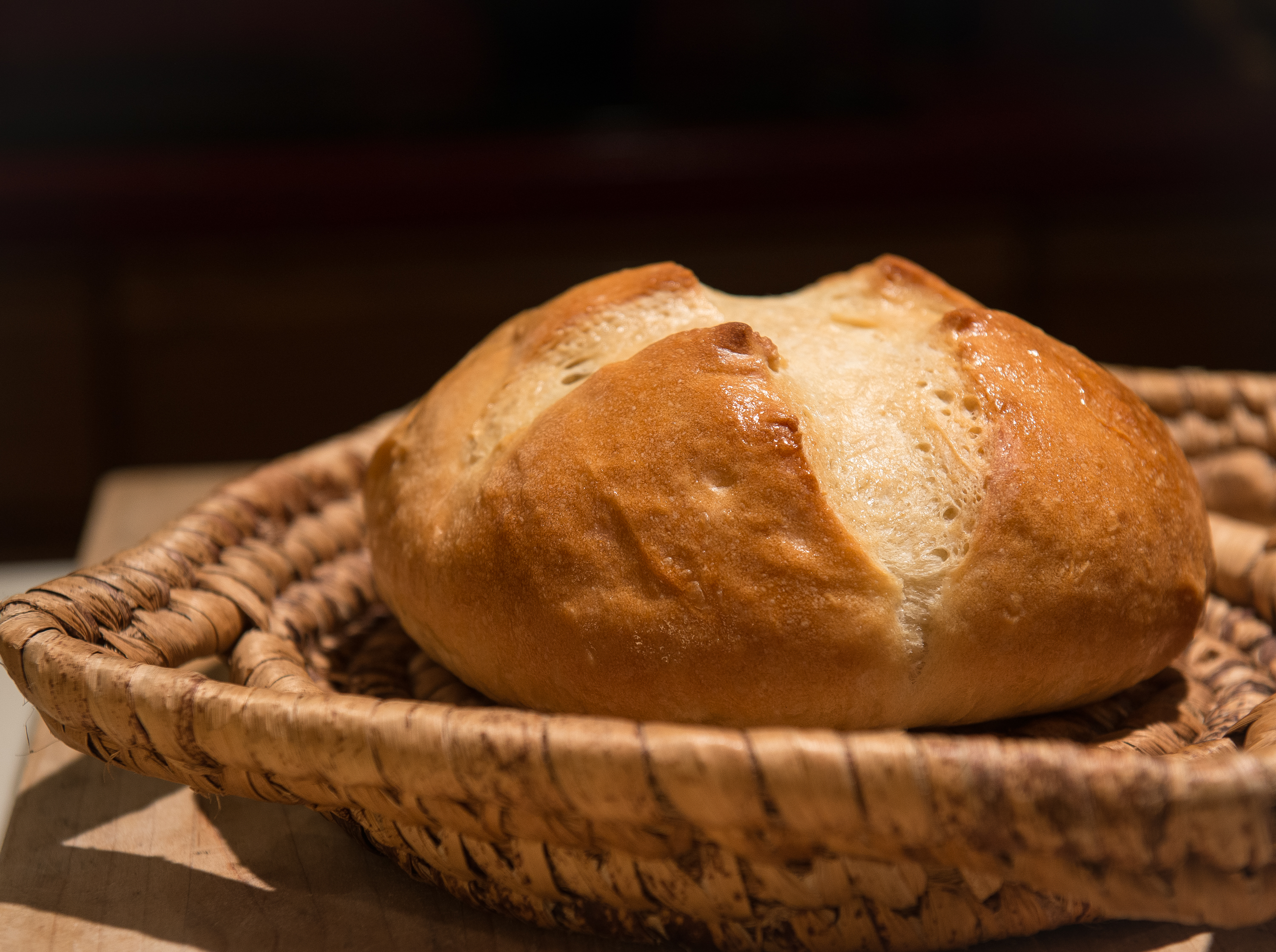Quick! Hand me a jar of my neighbor Sarah’s etherial tangerine marmalade.
I have two warm-from-the-oven loaves of sourdough bread sitting on my kitchen counter. Warm sourdough bread. Bitter-ish marmalade. It doesn’t get better than that.
As you may know if you regularly read this blog, one of my cooking goals in life is to make the ultimate sourdough loaf in my own oven.
Why am I so fixated on perfecting my baking game with a sourdough loaf?
Maybe it’s the history teacher in me. (I taught high school history for 33 years.) People have, after all, been enjoying sourdough bread for a very long time. Who in the world wouldn’t be interested in knowing the backstory of that? (Don’t snicker. I know I’m a history geek.)
Historically, there is evidence of bread making in neolithic times. (For those of you who dozed through history classes, that period began about 10,000 B.C.) Researchers also have identified a sourdough loaf found during a Switzerland dig that dates back to 3500 B.C. Bread is old.
Historians also have pretty substantial evidence of sourdough bread-making in Ancient Egypt. The Egyptians were big into beer making and they used the natural yeast from that project to make leavened breads. For Egyptians, it was, apparently, always time to party–beer or bread, it didn’t matter. Even young King Tut must have been affected by the leavened bread and yeasty beer craze. Speaking of King Tut…for those who are reading this and who might have missed it on other venues, Steve Martin’s vintage and inspried funky King Tut portrayal is absolute genius: Steve Martin’s King Tut. Just watch it!)
As the centuries passed, bread making became a part of the culinary traditions of the Greeks, the Romans and the Medieval Europeans with sourdough starter being the chief leavening agent for bakers.
Then….bam!…the development of commercially-produced yeast in the 19th century damaged the sourdough market and ushered in the modern bread era that has produced such culinary disasters as Wonder Bread. Julia Child deplored the decline in the quality of bread with her infamous remark: “How can a nation be called great if its bread tastes like kleenex?” How, indeed?
But…back to a really good bread…This loaf is my adaptation of a recipe from King Arthur Flour.
This bread has a a nice sour flavor enhanced by the use of not only a “fed” starter (my “Kellyanne” from a previous post here) but also with a couple of tablespoons of King Arthur Flour’s sourdough flavoring here.
Try it. I think you will enjoy it.
Here is the recipe:
Ingredients
- 8 ounces "fed" sourdough starter
- 12 ounces lukewarm water
- 2 t. instant yeast
- 2 T. King Arthur Flour Sourdough powder
- 2 1/2 teaspoons salt
- 21 1/4 ounces King Arthur Unbleached All-Purpose Flour
Instructions
- Combine all ingredients. Knead to form a smooth dough.
- Set your dough aside to rise for about 90 minutes in a greased and covered bowl. You want the dough to double in size.
- Once your dough has doubled in size, divide it (gently) into two parts.
- Shape the dough into two oval loaves and place them on a piece of parchment paper. Cover the loaves and let them rise for about an hour. The dough should be puffy after the rise.
- While your dough is rising preheat your oven to 425 degrees F.
- Spray the surface of the loaves with lukewarm water. Make two diagonal slashes on each loaf using a bread lame or a serrated bread knife.
- Bake the bread for 25 o 30 minutes. When it is done it should be a very deep golden brown color. Remove from the oven and let cool on a rack.
Here is the link to the original King Arthur Flour recipe from which this recipe was adapted: Rustic Sourdough Bread.


 Save Recipe
Save Recipe